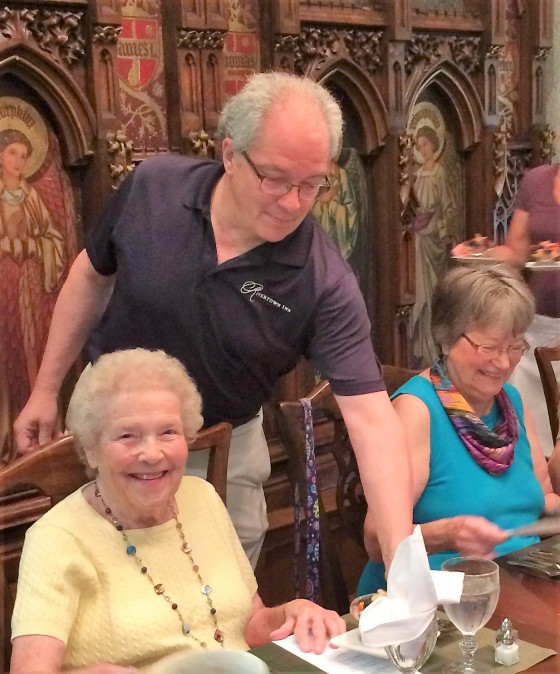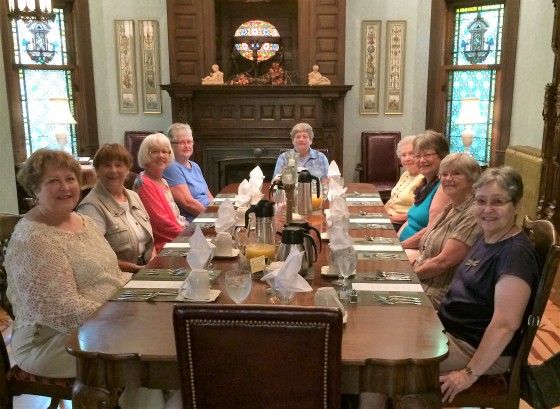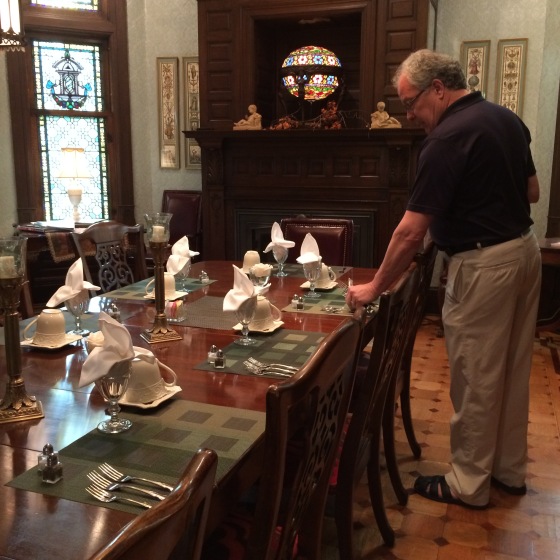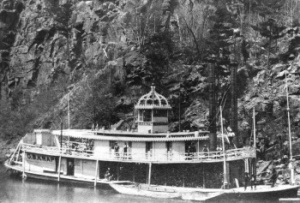Since the late 1800’s, bicycling has been very popular in Stillwater and the surrounding area. We often have Rivertown Inn guests who arrive on their bicycles and many people come to Stllwater to either participate in or watch the local bike races. On April 27th, Washington County will host the 48th annual Minnesota Ironman Bicycle Ride and on June 5th Nature Valley Bicycle Festival will be held in Stillwater. Guests who arrive without a bike can rent bicycles by calling the Rivertown Inn where our staff will gladly make arranges for them through Wahoo Adventure.
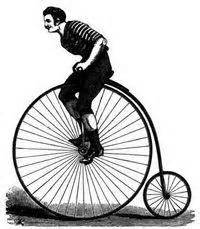
The “bicycle craze” in the United States began shortly after the safety bicycle was invented by John Kemp Starley in 1885. Unlike the earlier bikes with the large front wheel, the safety bike featured a steerable front wheel, equally sized wheels and a chain drive to the rear wheel.
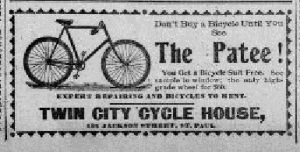
As early as 1886, bicycle races were held in Stillwater. The Saint Paul Daily Globe reported on a race held in April of 1886, between “Prince, champion of America; Woodside, champion of Ireland, and Eck, champion of Canada.” It was a 15 mile race which was completed in 52 minutes and 8 seconds with the fastest mile being completed in 3 minutes and 51 seconds. In July of 1891, under the heading “Dull Day in Stillwater,” the St. Paul Daily Globe reported on “the ladies bicycle race at the new Athletic park…”
The next major innovations in bicycle design were the use of pneumatic tires in 1888 and the invention of the coaster brake in 1896 (an important need for those who do not live on flat land). Before the use of pneumatic tires an elaborate suspension system (which made the bikes heavy, cumbersome and expensive) was needed to ride comfortably on hard surfaces. These new tires allowed for a much lighter frame and the resulting lower production cost brought the bicycle within reach of most people. In fact the bicycle became so popular and affordable that in 1895 the cost of a good horse hit an all time low.
The Stillwater Cycle Club was organized in July of 1895. In addition to promoting the hobby, they also raised funds to build local bicycle trails. John O’Brien, who built the home we now know as the Rivertown Inn, was elected president of this organization in 1896. Several newspaper articles mention that John O’Brien was an enthusiastic cyclist and on April 24, 1896, the Stillwater Daily Gazette reported that, “John O’Brien has purchased wheels for his children and may occasionally be seen mounted on a cycle himself – and let us add that these good sized folks, like Mr. O’Brien and R.S. Davis, appear graceful on their silent steeds of steel.”
As noted in the Saint Paul Globe, the Stillwater city council soon became involved with regulating this new mode of transportation. On May 21, 1896, they stated that the city council passed “an ordinace governing bicycling in the city. It provides for a maximum speed of six miles per hour, prevents riding on sidewalks, and compels riders to carry lanterns on their wheels after dark.” A few months later, they revisited the new ordinance and removed the lantern requirement. I have not been able to confirm any other changes to this ordinance, so it might be amusing to racers in Stillwater, that they could be ticketed for traveling faster than six miles per hour.
In August of 1896, the Deere Weber Bicycle Day at the State Fair Grounds was touted as being “the greatest cycle meet ever held west of Chicago” by the Saint Paul Globe. Among the participants in the “One-Mile Fat Riders’ Race – weight must be over 200 pounds” was John O’Brien of Stillwater. It was reported that “The fleshy gentlemen provided considerable amusement” and John came in third place.
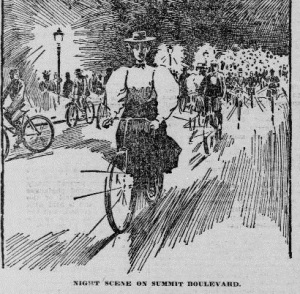
In 1897 and 1898, the local newspapers include many articles concerning bike runs from St. Paul to Stillwater by the Capital City Cycle Club. The Little Falls (Minnesota) Weekly Transcript reported in 1897 and 1898 about Felix Simonet and friends of Stillwater traveling between the two cities on bicycles.
Although the Stillwater Cycle Club had been planning a cycle path to Lake Elmo since early 1897, it was reported by the St. Paul Globe on September 21, 1898, that “The city of Stillwater has no cycle paths. It is to be excused for this, perhaps, as they would have to be equipped with elevators and safety devices.” This little jab, may have got them moving, as the Stillwater Gazette reported on April 20th, 1900, that “Work on the Lake Elmo Path began this morning.” By early 1901, the Stillwater Cycle Club was working with the area boards of county commissioners to complete the cycle path to Stillwater “as far as the Ramsey and Hennepin county lines.”
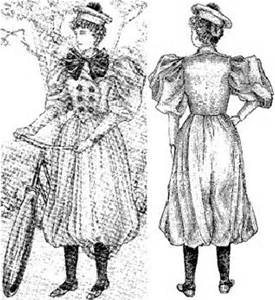
Typical Ladies Bicycle Attire
The “cycling craze” or “golden age of cycling” dropped off dramatically between 1900 and 1910 as automobiles became the preferred mode of transportation. One legacy of this “golden age” concerns the rights of women. According to Wikipedia, “the impact of the bicycle on female emancipation should not be underestimated. The safety bike gave women unprecedented mobility…As bicycles became safer and cheaper, more women had access to the personal freedom they embodied, and so the bicycle came to symbolize the New Woman of the late nineteenth century…Since women could not cycle in the then-current fashions for voluminous and restrictive dress, the bicycle craze fed into a movement of so-called rational dress, which helped liberate women from corsets and ankle-length skirts and other encumbering garments…”
Thank you for your readership and please let me know if there is anything of local interest you might suggested for future blogs. Next week we will be announcing an exciting new blog special for the month of May at the Rivertown Inn, so stay tuned.
#onlyinMN
#historicstillwater
